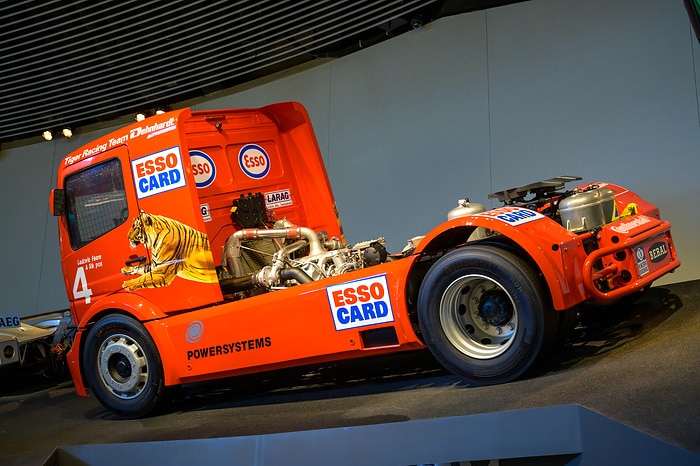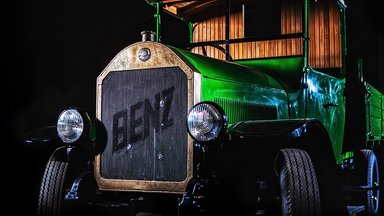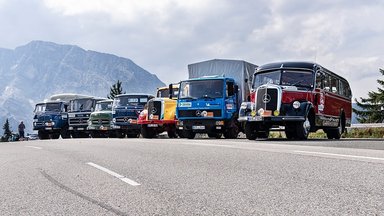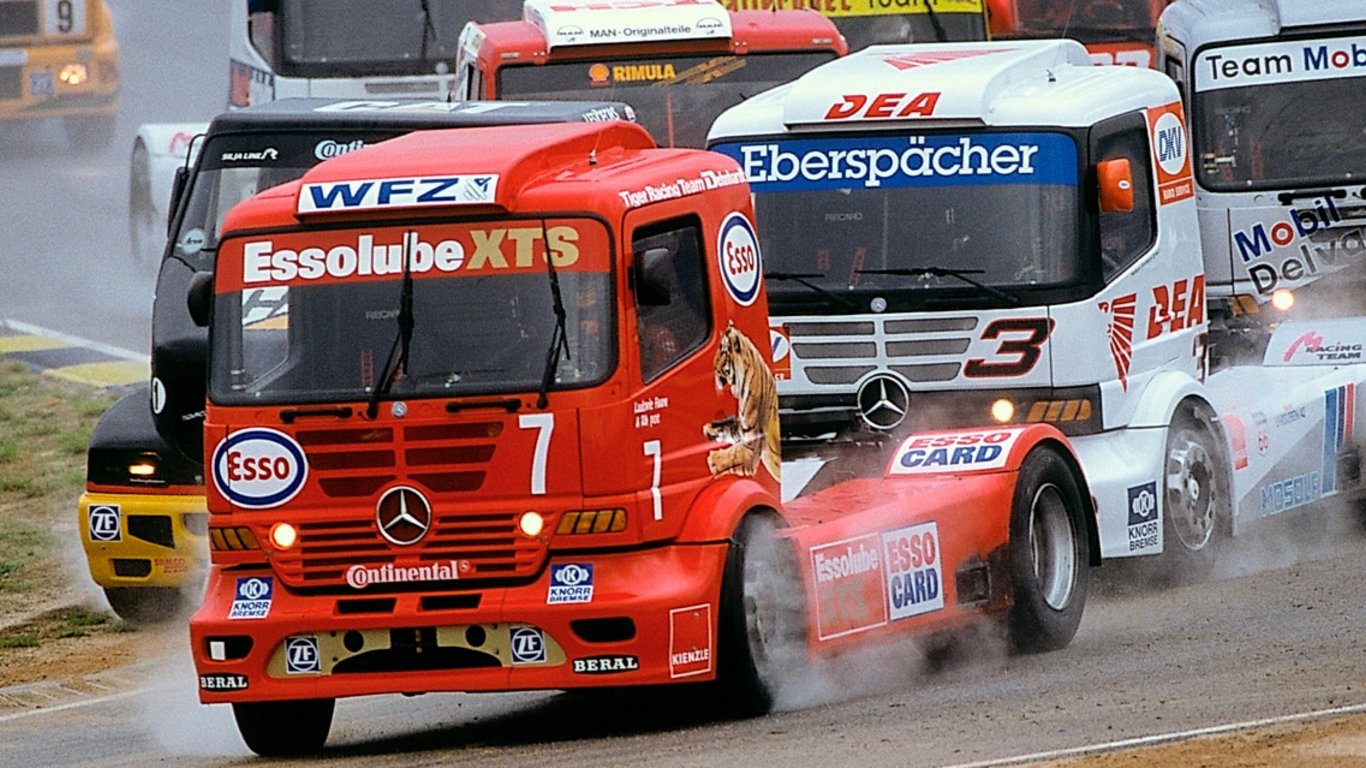
Five-tonne racing truck with 1,100 kW (1,496 hp) and 160 km/h
Download

Five-tonne racing truck with 1,100 kW (1,496 hp) and 160 km/h
In 1998, Ludovic Faure became European champion with the Mercedes-Benz Atego racing truck Truck racing fans were thrilled by the battle of extremes between super-fast tractor units Thoroughbred racers with optimised technology in the Super Race Class Thirteen European championship titles with Mercedes-Benz vehicles Stuttgart. “Close-up” – the name of this series from the Mercedes-Benz Museum says it all. Each instalment tells…
- In 1998, Ludovic Faure became European champion with the Mercedes-Benz Atego racing truck
- Truck racing fans were thrilled by the battle of extremes between super-fast tractor units
- Thoroughbred racers with optimised technology in the Super Race Class
- Thirteen European championship titles with Mercedes-Benz vehicles
Stuttgart. “Close-up” – the name of this series from the Mercedes-Benz Museum says it all. Each instalment tells a surprising, exciting or behind-the-scenes story, shining a spotlight on details of a vehicle, an exhibit or an architectural or design feature. In the spotlight this time: the Mercedes-Benz Atego racing truck from 2001.
No. 11/2023: Mercedes-Benz Atego racing truck from 2001
Race champion: The bright red giant high up on the banked curve in Legend Room 7: Silver Arrows – Races and Records certainly attracts attention. It looks unusual amongst the low, slender motorsport cars. A tractor unit on the racetrack? Quite so. From the mid-1980s until 2001, the European Truck Racing Championship (ETRC) title went to drivers with Mercedes-Benz trucks no less than thirteen times.
Victorious: The Atego racing truck displayed in the Museum is the truck driven by Ludovic Faure in the 2001 season. On 4 October 1998, 25 years ago, the Frenchman became European champion in the top Super Race Class category with a likewise red Atego. He competed for the Tiger Racing Team Dehnhardt. In Jarama, Spain, a third and a second place in both races was enough for him to win the title. Mercedes-Benz won the Constructors’ Championship by a wide margin. In addition, Heinz-Werner Lenz won both races in the Race Class with a Mercedes-Benz 1838 S, and became European champion for the second time. What a weekend.
A league of their own: Fans of the racing series are fascinated by the battle between these “giants of the road” on race circuits. It is an incomparable game of extremes. It is highly impressive to watch a racing truck weighing around five tonnes effortlessly accelerate to racing speed and rush through the bends to the acoustic accompaniment of the distinctive roar of a large-capacity engine and the whistling of turbochargers. Acceleration from standstill to 100 km/h takes only around four seconds. The maximum speed is 160 km/h – twice the maximum allowed for trucks on public motorways.
Technical refinements: The trucks in the Super Race Class are thoroughbred racing vehicles. They merely look like normal tractor units. Chassis, powertrain, cockpit: everything is optimised for fast driving on the racetrack. For example, the size 315/70 R 22.5 tyres are not standard tyres but low-profile racing tyres. The Atego was the third development stage in Mercedes-Benz racing trucks. It first went into action in the 1998 season.
Workplace: The interior of the cab looks like any racing car at first glance: rollover bar, bucket seat, wide harness straps, a couple of displays, two dozen buttons. The two gearshift paddles right near the steering wheel are robust affairs: a green one on the right and a red one on the left. The driver sits as low as possible yet relatively high up, but ahead of the front axle. The vehicle movements therefore feel different from other racers. But that’s something one gets used to.
Powerhouse: The OM 501 LAR was the engine of choice for Mercedes-Benz racing trucks from 1996 onwards. The high-performance V6 diesel engine has high-pressure injection and two turbochargers with high-pressure compressors and intercooling. From a displacement of around twelve litres, it develops 1,100 kW (1,496 hp) within a comparatively narrow rpm band of 2,000 to 2,200 rpm. The torque is a hefty 5,000 newton metres. The Mercedes-Benz Museum displays the engine in a showcase, just a few steps away from the red Atego.
Accessible: The rest of the technology is fairly exposed in the chassis, covered only by the side panels. This gives the mechanics easy access to the major assemblies. The front cover has quick-release fasteners for rapid removal. A square exhaust outlet is clearly visible on the side. Pipes as thick as the arms of a muscular athlete lead to it from the engine. Mounted above everything is the distinguishing feature of racing trucks: the fifth-wheel coupling. This is a tongue-in-cheek salute to the production versions.
Article assets
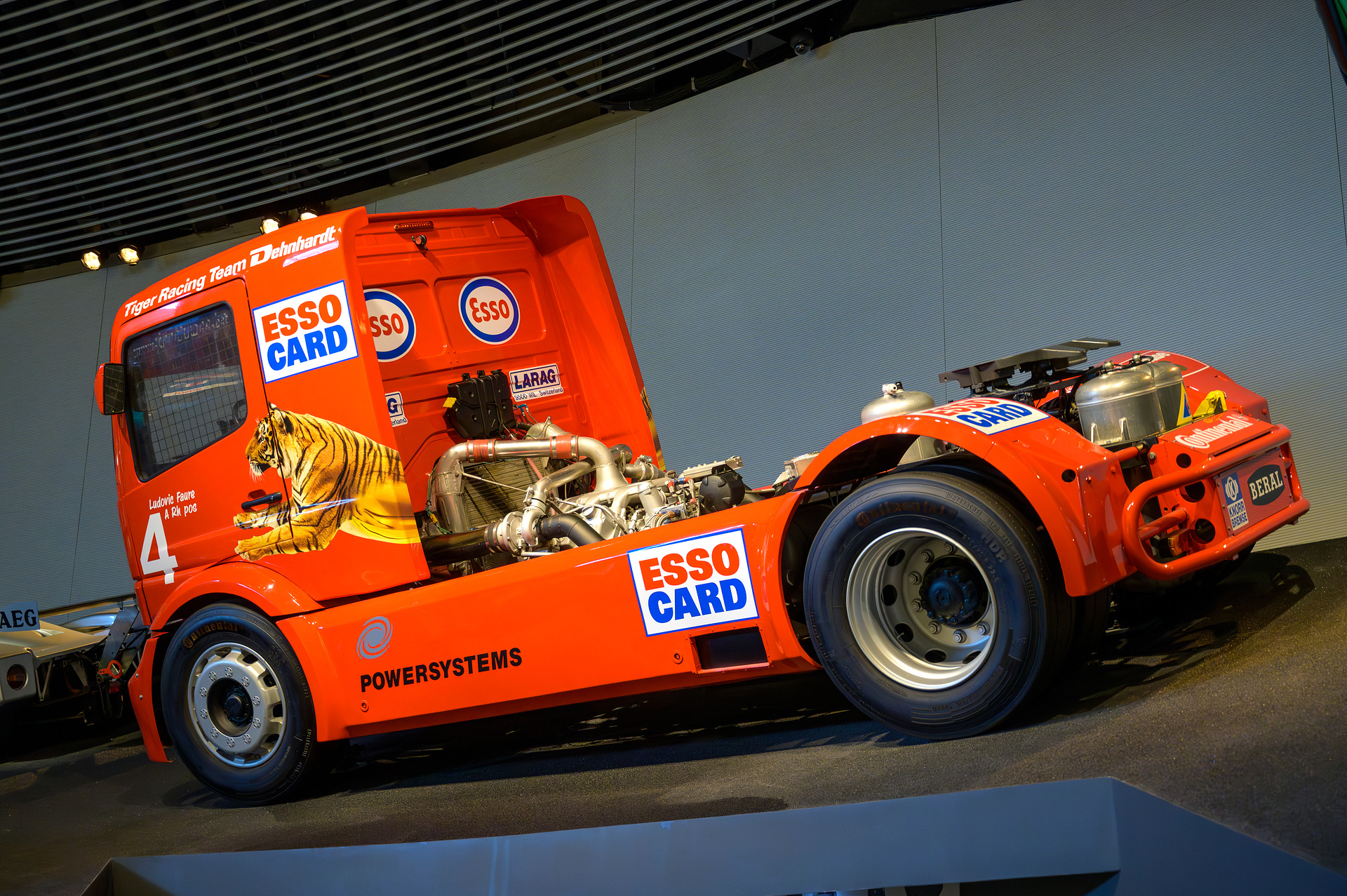
Five-tonne racing truck with 1,100 kW (1,496 hp) and 160 km/h

Five-tonne racing truck with 1,100 kW (1,496 hp) and 160 km/h

Five-tonne racing truck with 1,100 kW (1,496 hp) and 160 km/h

Five-tonne racing truck with 1,100 kW (1,496 hp) and 160 km/h

Five-tonne racing truck with 1,100 kW (1,496 hp) and 160 km/h

Five-tonne racing truck with 1,100 kW (1,496 hp) and 160 km/h

Five-tonne racing truck with 1,100 kW (1,496 hp) and 160 km/h

Five-tonne racing truck with 1,100 kW (1,496 hp) and 160 km/h

Five-tonne racing truck with 1,100 kW (1,496 hp) and 160 km/h

Five-tonne racing truck with 1,100 kW (1,496 hp) and 160 km/h

Five-tonne racing truck with 1,100 kW (1,496 hp) and 160 km/h

Five-tonne racing truck with 1,100 kW (1,496 hp) and 160 km/h

Five-tonne racing truck with 1,100 kW (1,496 hp) and 160 km/h

Ulrike Burkhart
Spokesperson Mercedes-Benz Trucks Product, Service & eTruck
ulrike.burkhart@daimlertruck.com
+49 160 861 3757

Carola Pfeifle
Spokesperson Product Communications Mercedes-Benz Trucks
carola.pfeifle@daimlertruck.com
+49 160 8612423
